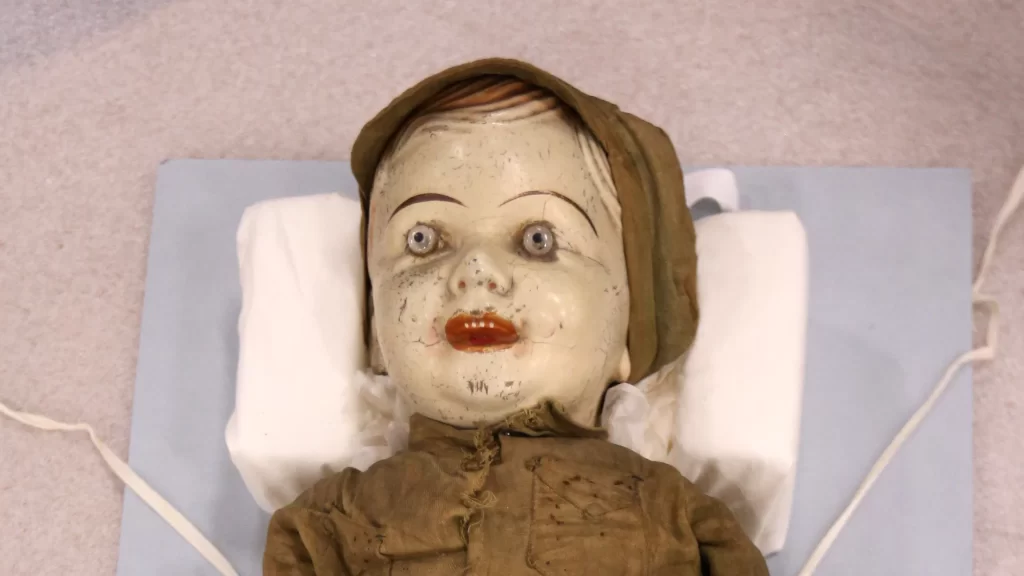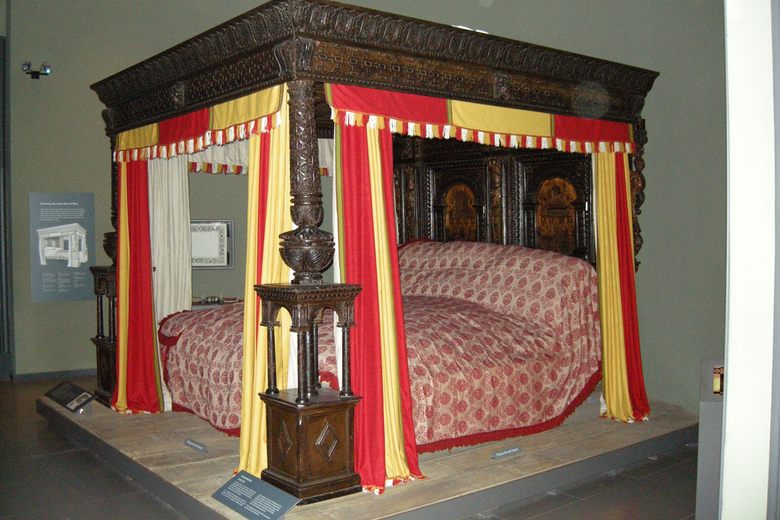Guides
Strangest Things Ever Preserved in a Museum

What is Museum?
A museum serves the community by displaying and preserving significant objects, or it is a building that stores and exhibits objects of historical, scientific, artistic, or cultural interest.
They display a fascinating range of exhibits that captivate visitors, showcasing some of history’s most peculiar and extraordinary objects. These collections house remarkable artifacts, providing a glimpse into intriguing corners of the past. In this article, RNN will explore the strangest things ever preserved in museums.
Strangest Things Ever Preserved in a Museum
1. Mummified Mermaids

The Fiji mermaid, also known as the Feejee mermaid, was a peculiar creation crafted by combining the head and torso of a young monkey with the back half of a fish. This oddity was a regular attraction in sideshows, where it masqueraded as a mummified creature, purportedly possessing the traits of both a mammal and a fish, resembling a mermaid. The creature’s body featured fish scales adorned with animal hair, while its chest bore pendulous breasts, and its mouth remained wide open, revealing bared teeth. The right hand rested against the right cheek, and the left hand was tucked under the lower left jaw.
Over time, various replicas and versions emerged, displayed with similar names and descriptions. P. T. Barnum exhibited the original specimen at Barnum’s American Museum in New York in 1842. Regrettably, the mermaid disappeared, likely destroyed in one of the numerous fires that plagued parts of Barnum’s collections.
Barnum persuaded Griffin to bring the mermaid’s exhibition to the American Museum of Natural History, where it lasted only five days.
Moreover, certain museums house alleged mummified mermaids, which have long been a subject of debate. These mythical creatures captivate the imagination, and their authenticity continues to be a subject of interest for both scientists and enthusiasts.
2. The Soap Lady

In 1875, Philadelphia witnessed the exhumation of a woman’s body, now known as the Soap Lady. According to reports, the Soap Lady met her demise during the yellow fever epidemic that swept through the 1790s. Today, visitors can view her well-preserved body at the Mutter Museum in Philadelphia, Pennsylvania.
3. Cursed and Haunted Objects

Museums worldwide house mysterious and eerie items, including cursed and haunted objects that captivate visitors. These artifacts, with dark histories, have sparked curiosity and fear.
Some infamous examples are:
- “Cursed Idol,” rumored to bring misfortune,
- The “Haunted Painting
-
The Great Bed of Ware

According to Google Arts and Culture, The Great Bed of Ware was supposedly made for King Edward IV in the 15th century. However, it didn’t provide a peaceful night’s sleep as it moved between Wear’s inns for centuries. Commoners who slept in it covered the bed in graffiti and damaged the fine carvings, making the frame look battered and worn. Legend has it that carpenter Jonas Fosbrooke, who crafted the bed for the king, becomes enraged by the disrespectful treatment and haunts any commoner who dares to sleep in it. Fortunately, the bed is now safely exhibited at the V&A in Londons.
-
The Unlucky Mummy

Museums preserve this haunted object – The Unlucky Mummy. It is not a mummy but a coffin lid dating back to around 950-900 BCE. Thebes was its place of discovery during the 1800s. Four young Englishmen bought it and all suffered unfortunate fates.
According to Google Arts and Culture, In the early 20th century, journalist William Thomas Stead wrote about the cursed artifact. He later boarded the ill-fated Titanic and talked about the curse before the disaster. Many believed that the mummy caused the ship’s sinking. Today, the Unlucky Mummy is exhibited in the British Museum.
-
The Hope Diamond

The famous Hope Diamond originated in the Kollur Mine, Andhra Pradesh, India. Legend says it carries a curse, causing misfortune to its owners. The curse began when a thief stole it from a statue’s eye and then suffered a grim fate. Throughout time, those who possessed the diamond experienced misfortunes such as murder, execution, suicide, bankruptcy, and imprisonment. However, the curse appeared to lift when the diamond got donated to the Smithsonian in 1958.
The Hope diamond, a flawless 45-plus gem of rare steel-blue color, was donated to the Smithsonian Institution in 1958 by New York City jeweler Harry Winston and is the centerpiece of the Hall of Gems at the Smithsonian’s National Museum of Natural History.
4. Cher Ami

Cher Ami, a carrier pigeon, played a vital role in rescuing hundreds of men during World War I in France. The term Cher Ami translates to “Dear Friend” in French.
In 1918, over 500 men found themselves trapped without food or ammunition. Tragically, many lost their lives or were wounded, leaving only 190 survivors. Seeking help, the survivors dispatched two pigeons, as the Allied troops were unaware of their exact location. Unfortunately, the Germans shot down both pigeons, thwarting their attempts.
Cher Ami fearlessly flew to her destination with a message, even amid enemy fire. Despite facing shots, she persevered and delivered the message, ultimately saving lives. Today, the National Museum of American History honors Cher Ami’s legacy.
5. Ancient Toilets / Toilets From Around The World

This is another strangest thing ever Preserved in Museums as they play a crucial role in preserving and showcasing our cultural heritage, going beyond conventional items to exhibit daily life, including ancient sanitation practices. These displays shed light on waste disposal methods, water usage, and cleanliness in different eras.
Visitors can now explore ancient bathroom facilities and sanitation tools, appreciating advancements in this aspect of human life. Museums contribute to education and awareness about historical living conditions, allowing us to compare the past with modern-day conveniences and understand the hygiene challenges of the past.
6. Ancient Pastries/ Food

Certain museums curate displays of peculiar food items, whether they are unusual delicacies from different cultures or preserved meals from historical events. These exhibits offer a glimpse into diverse culinary practices and the significance of food in various societies.
According to Atlas Obscura, You can see the preserved shoulder of beef, nearly 3,500 years old, in Gallery 109 of the Metropolitan Museum of Art. It was found at a pharaonic site near Luxor, Egypt, likely offered for a journey to the afterlife, possibly for the young prince Amenemhat.
Similarly, the British Museum has broken pastries resembling cookies that were left in a pink pastry box. These pastries date back to the eighth century and were found in a cemetery in China’s Xinjiang autonomous province. The arid climate preserved them for 1,500 years, making them some of the world’s oldest surviving pastries.
7. Specimens

Museums that explore space and astronomy often exhibit specimens related to meteorites and cosmic phenomena. These displays remind us of the vastness of the universe and the wonders beyond our planet.
These collections hold valuable scientific and historical significance. The preserved items provide researchers and the public with essential insights into various fields, including biology, geology, and anthropology. By safeguarding these artifacts, museums contribute significantly to the preservation of our natural and cultural heritage.
8. Polycephaly Creatures
The Two-Headed Creature

Many museums of natural history contain preserved two-headed animals. The Museum of Lausanne in Lausanne, Switzerland, and the Ripley’s Believe It Or Not!
Visitors to the Museum at the Georgia State Capitol Building in Atlanta can now marvel at the fascinating head mount of a two-headed calf. The intriguing exhibit showcases the unique specimen, preserved for all to see.”
This curiosity about nature astounds visitors with its rare occurrence and raises questions about the mysteries of genetic anomalies.
9. Cockroaches

It will be so funny to you seeing Cockroaches on the list, Cockroaches dressed as famous people take the spotlight at the intriguing Cockroach Hall of Fame Museum in Plano, Texas. The museum showcases these tiny creatures donning costumes, transforming them into celebrities like Britney Spears and Elvis Presley, all thanks to the curator, Michael Bohdan.
Don’t forget to keep an eye out for these things on your next visit to the museum.
10. Guy the Gorilla

Meet Guy the Gorilla, London Zoo’s beloved resident who graced Children’s TV shows. Born in 1946, this gentle giant weighed 240 kilograms and drew massive crowds. His kindness extended even to birds that accidentally flew into his cage; he would delicately inspect them before releasing them back to freedom.
Tragically, in 1978, he passed away due to a heart attack after undergoing tooth surgery. Following his demise, his body found a resting place at the Natural History Museum.
Summary of Strangest Things Ever Preserved in a Museum
- Mummified Mermaids
- The Soap Lady
- Cursed and Haunted Objects
- Cher Ami
- Ancient Toilets / Toilets From Around The World
- Ancient Food
- Specimens
- Polycephaly Creatures
- Cockroaches
- Guy the Gorilla
